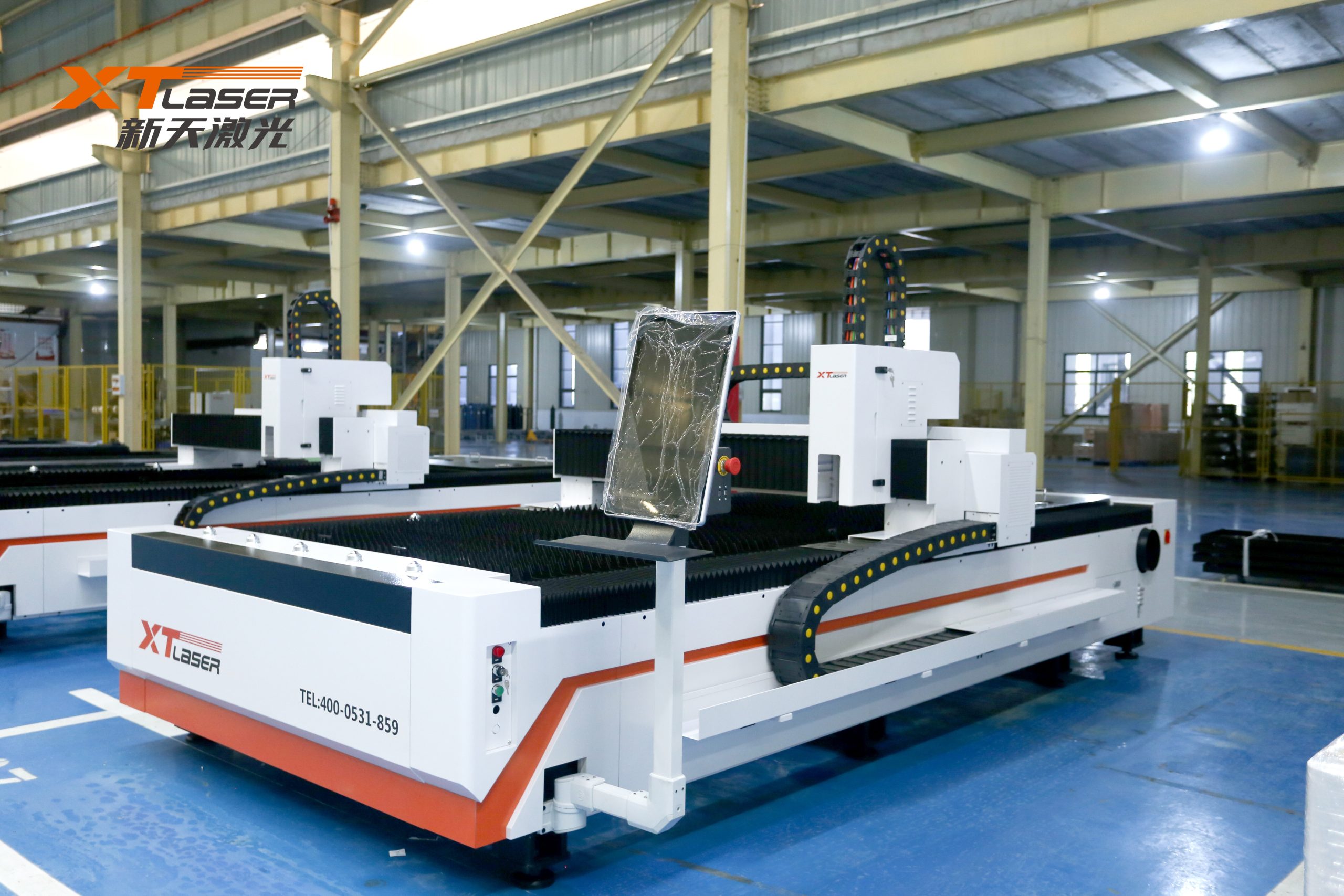Layout precautions for metal fiber laser cutting machine
Before using the metal fiber laser cutting machine, we import the prepared drawings into the program of the metal fiber laser cutting machine, and then use typesetting software to arrange the graphics on a board, so that the metal fiber laser cutting machine can process products processed in batches. Although the typesetting process is very short, it hides a lot of knowledge. What issues should be paid attention to when setting up a laser cutting machine. What are the key points of laser cutting machine layout.

1. Corner melting.
When decelerating and cutting the edges and corners of thin steel plates, the laser will cause the edges and corners to overheat and melt. Create a small radius at the corner to maintain high-speed laser cutting and avoid the phenomenon of steel plate overheating and melting during corner cutting, thereby achieving good cutting quality, reducing cutting time, and improving productivity.
2. Part spacing.
Generally, when cutting thick and hot plates, the distance between the parts should be large, as the heat generation of the thick and hot plates is greatly affected. When cutting sharp corners and small shapes, it is easy to burn edges, which affects the cutting quality.
3. Lead wire settings.
In the process of cutting thicker plates, in order to ensure good connection between the cutting seams and prevent burns at the starting and ending points, a transition line is often drawn at each of the starting and ending points of the cutting, called the lead and tail lines, respectively. The lead and tail lines are important to the workpiece itself. It is useless, so it should be arranged outside the range of the workpiece, and be careful not to set the leads in places that are not easy to dissipate heat, such as sharp corners. The connection between the guide wire and the slit should adopt a circular arc transition as much as possible to ensure smooth machine operation and avoid burns caused by corner stopping.
4. Common edge cutting
Join two or more parts into a combination and try to join as many regular shapes as possible. Common edge cutting can greatly shorten cutting time and save raw materials.
5. Partial collision occurred.
In order to maximize production efficiency, many laser cutting equipment operates continuously 24 hours a day and adopts unmanned automatic loading and unloading devices. After cutting, touching flipped parts can cause damage to the cutting head, interrupt production, and cause significant losses. This should be noted when sorting:
1. Choose a suitable cutting path, bypass the cutting area, and reduce collisions.
2. Choose the best cutting route to reduce cutting time.
③ Automatically or manually combine multiple small parts with small connections. After cutting, the removed parts can easily disconnect small connections.
6. Disposal of surplus materials.
After cutting the parts, the skeletal residue on the laser cutting equipment workbench needs to be removed as soon as possible to facilitate subsequent cutting operations. For laser cutting equipment without an automatic discharge device, skeletal residual materials can be cut into small pieces for quick removal. This avoids personal injury to operators caused by handling heavy and sharp debris.



